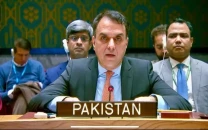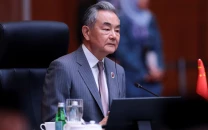The drone affair: America’s passion for strikes heats up

As a result, what is still officially classified as a covert campaign on Pakistan’s side of the border with Afghanistan has in many ways morphed into a parallel conventional war, several experts say. In the rugged mountains in the north-west, missiles launched by unmanned Predator or Reaper drones have become so commonplace that some US officials liken them to modern-day “cannon fire.” They are no longer aimed solely at “high-value” targets either.
An analysis of data provided to Reuters by US government sources show that the CIA has killed around 12 times more low-level fighters than mid-tohigh- level al Qaeda and Taliban leaders since the drone strikes intensified in the summer of 2008. Reuters has also learned that Pakistan, though officially opposed to the strikes, is providing more behind-the-scenes assistance than in the past. Beyond the human intelligence that the CIA relies on to identify targets, Pakistani agents are sometimes present at US bases, and are increasingly involved in target selection and strike coordination, current and former US officials said.
Back in Washington, the technology is considered such a success that the US military has been positioning Reaper drones at a base in the Horn of Africa. “Everyone has fallen in love with them,” a former US intelligence official said of the drone strikes. The main reason for the drone strike programme’s expansion, including improved drone technology, is simply the lack of a better option. “Many of the highest priority terrorists are in some of the remotest, most inaccessible, parts of our planet,” one US official said of why targeted killing has gained favor. “You’ve got two choices - kill or capture.
It’s just not a tough decision.” Although the Obama administration says it has safeguards in place for identifying what it calls “lawful targets,” some human rights groups question how robust those safeguards could be if the CIA is killing hundreds of militants whose identities are largely unknown. They also worry about civilians. A Pakistani intelligence official dealing with South Waziristan said the vast majority of deaths were just foot soldiers. “They hit whoever they get,” another intelligence official in North Waziristan said.
The intelligence officer said 20 per cent of total deaths were civilians or non-combatants, or one in five. And others put the figure even higher. “Based on my military experience, there’s simply no way so few civilians have been killed,” Jeffrey Addicott, who served as the senior legal adviser to the US Army Special Forces said of the US tally. Regardless of the death toll, the truth is that the CIA would not be able to find the militants in many cases without the help of Pakistan’s spies and informants, officials say. “You need guys on the ground to tell you who they (the targets) are and … that’s coming from the Pakistanis,” a US official said. A Pakistan security expert, Ikram Sehgal, agreed.
He said the intelligence underpinning the drone strikes has improved precisely because of increased Pakistani cooperation. As the raw intelligence from the drones pours in, Pakistani intelligence liaisons work directly with CIA and military teams in Pakistan and Afghanistan to avoid miscommunication with agents and informants in the field. “We have Pakistanis around to help with coordination,” a US military official said. US officials also acknowledge that the Pakistan administration plays a balancing act between appeasing locals and fighting militancy.
A former US intelligence official said the CIA was conducting drone strikes instead of the US military because the covert nature of the program gives Islamabad the “fig leaf of deniability.” “They can’t stand up to their own people and say they’re in league with the US,” the official said.But tension remains beneath the surface. While their leaders cooperate, many in the Pakistani military deeply resent the drone strikes, complicating efforts to bring Pakistan wholeheartedly on board in the battle against Islamist militants. “This is a proud military and many hate the drone program because it is a constant reminder that they’re not in control,” a former U.S. intelligence official said.
Published in the Express Tribune, May 20th, 2010.



















COMMENTS
Comments are moderated and generally will be posted if they are on-topic and not abusive.
For more information, please see our Comments FAQ